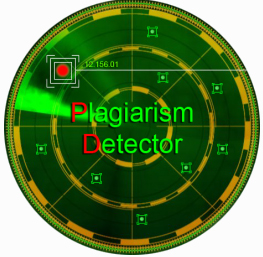Identification of Venation Type Based on Venation Density using Digital Image Processing
Abstract
Leaf venation is one biometric feature of leaves that have an important role in growth processes of the plant, and to determine the relationship of the plant physiology and the environment in which plants grow. At every different environment, plants have different types of leaf venation. It can be seen from the level of the leaf vein density. In this study, the feature of leaf vein density was used to identify the leaves based on venation type. The venation density features obtained from segmentation, vein detection, and density feature extraction of leaf venation. Identification of the venation type was made using the artificial neural network (ANN). The results of this study indicate that the proposed method can classify the leaf correctly image based on the venation type. On the dataset with 324 samples, the accuracy of 82.71% was obtained. This shows that the leaf vein density features allow use as a plant identifier.
Keywords: leaf vein density, vein detection, density feature extraction, artificial neural network
Full Text:
PDFReferences
R.F. Evert & S.E. Eichhorn, Raven Biology of Plants, 8th ed., Freeman and Company, New York, p.10, 2013.
G. Tjitrosoepomo, Morfologi Tumbuhan, Gadjah Mada University Press, Yogyakarta, pp.254-263, 2016.
B. Douaihy, K. Sobierajska, A.K. Jasinska, K. Boratynska, T. Ok, A. Romo, N. Machon, Y. Didukh, M.B. Dagher-Kharrat & A. Boratynski, “Morphological versus molecular markers to describe variability in juniperus excelsa subsp. excelsa (cupressaceae)”, AoB Plants, pp.1-14, 2012.
T.L. Le, D.T. Tran & V.N. Hoang, “Fully automatic leaf-based plant identification, application for vietnamese medicinal plant search”, In Proceedings of the Fifth Symposium on Information and Communication Technology - SoICT '14, New York, pp.146-154, 2014.
S. Wing, A. Ash, B. Ellis, L.J. Hickey, K. Johnson & P. Wilf, Manual of Leaf Architecture – morphological description and categorization of dicotyledonous and net-veined monocotyledonous angiosperms by Leaf Architecture Working Group, Smithsonian Institution 10th St. & Constitution Ave., N.W. Washington, DC, 1999.
J. Yang, R.A. Spicer, T.E.V. Spicer, N.C. Arens, F.M.B. Jacques, T. Su, E.M. Kennedy, A.B. Herman, D.C. Steart, G. Srivastava, R.C. Mehrotra, P.J. Valdes, N.V. Mehrotra, Z.K. Zhou & J.S. Lai, “Leaf form-climate relationships on the global stage: an ensemble of characters”, Global Ecology and Biogeography, vol. 24, no. 10, pp.1113-1125, 2015.
M. Rahmadhani & Y. Herdiyeni, “Shape and vein extraction on plant leaf images using fourier and b-spline modeling”, In Proceeding of AFITA International Conference, the Quality Information for Competitive Agricultural Based Production System and Commerce, pp.306-310, 2010.
A. Wahyumiyanto, I.K.E. Purnama & Christyowidiasmoro, “Identifikasi tumbuhan berdasarkan minutiae tulang daun menggunakan SOM kohonen”, Undergraduate Thesis, Institut Teknologi Sepuluh Nopember, Indonesia, 2011.
B. Blonder & B.J. Enquist, “Inferring climate from angiosperm leaf venation networks”, New Phytologist, vol. 204, no. 1, pp.116-126, 2014.
D. Uhl & V. Mosbrugger, “Leaf venation density as a climate and environmental proxy: A critical review and new data”, Palaeogeography Palaeoclima-tology Palaeoecology, vol. 149, no. 1-4, pp.15-26, 1999.
Y. Zhu, H. Kang, Q. Xie, Z. Wang, S. Yin & C. Liu, “Pattern of leaf vein density and climate relationship of quercus variabilis populations remains unchanged with environmental changes”, Trees, vol. 26, no. 2, pp.597-607, 2011.
W.V. Zalenski, “Ueber die ausbildung der nervation bei verschiedenen pflanzen”, Berichte Deutsche Botanicshe Gesellschaft, vol. 20, pp.433-440, 1902.
L.J. Hickey, “Classification of the architecture of dicotyledonous leaves”, American Journal of Botany, vol. 60, no. 1, pp.17-33, 1973.
J. Bühler, L. Rishmawi, D. Pflugfelder, G. Huber, H. Scharr, M. Hülskamp, M. Koornneef, U. Schurr & S. Jahnke, ”Phenovein-A tool for leaf vein segmentation and analysis”, Plant Physiology, vol. 169, pp.2359-2370, 2015.
A. Salima, Y. Herdiyeni & S. Douady, “Leaf vein segmentation of medicinal plant using hessian matrix”, In Proceeding of ICACSIS 2015, pp.275-279, 2015.
R.D.O. Plotze & O.M. Bruno, “Automatic leaf structure biometry: computer vision techniques and their applications in plant taxonomy”, International Journal of Pattern Recognition and Artificial Intelligence, vol. 23, no. 02, pp.247-262, 2009.
A. Ambarwari, Y. Herdiyeni, & I Hermadi, “Biometric Analysis of Leaf Venation Density Based on Digital Image”, TELKOMNIKA (Telecommunication Computing Electronics and Control), vol. 16, issue 4, pp.1735-1744, 2018.
A. McAndrew, An Introduction to Digital Image Processing with MATLAB, Notes for SCM2511 Image Processing 1, School of Computer Science and Mathematics, Victoria University of Technology, pp.137-160, 2004.
R.C. Gonzalez, R.E. Woods & S.L. Eddins, Digital Image Processing Using MATLAB, Pearson Prentice Hall, New Jersey, 2004.
C.A. Price, P.R.T. Murno & J.S. Weitz, “Estimates of leaf vein density are scale dependent”, Plant Physiology, vol. 164, pp.173-180, 2014.
F. Rosenblatt, Principles of neurodynamics. Perceptrons and the theory of brain mechanisms, Cornell Aeronautical Lab Inc Buffalo NY, No. VG-1196-G-8, 1961.
DOI: https://doi.org/10.33365/jti.v12i2.127
Refbacks
- There are currently no refbacks.
Copyright (c) 2021 Agus Ambarwari, Yeni Herdiyeni, Irman Hermadi

This work is licensed under a Creative Commons Attribution-ShareAlike 4.0 International License.
JURNAL TEKNOINFO
Published by Universitas Teknokrat Indonesia
Organized by Prodi S1 Informatika FTIK Universitas Teknokrat Indonesia
W: http://ejurnal.teknokrat.ac.id/index.php/teknoinfo/index
E : teknoinfo@teknokrat.ac.id.
Jl. Zainal Abidin Pagaralam, No.9-11, Labuhan Ratu, Bandarlampung

This work is licensed under a Creative Commons Attribution-ShareAlike 4.0 International License.
Jumlah Pengunjung : View Teknoinfo StatsCounter



















